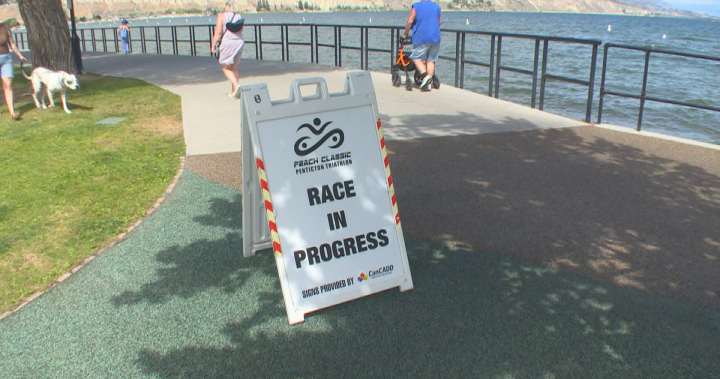The sun rises over Penticton’s Okanagan Lake, glinting off the water where hundreds of athletes will soon test their mettle. For locals and competitors alike, the upcoming August triathlon represents more than just sport – it’s about community resilience following last year’s tragedy that changed everything.
I’ve spent the past week speaking with organizers, athletes, and city officials about the heightened safety protocols being implemented for this summer’s event. What emerges is a portrait of a community determined to honor the spirit of competition while acknowledging painful lessons learned.
“We’ve completely reimagined our approach to safety,” explains Marcia Thomson, race director for the 2024 Penticton Triathlon. “Last year’s Granfondo accident forced everyone in event management across the province to reevaluate how we protect participants.”
Thomson refers to the devastating crash during last year’s Penticton Granfondo cycling event that claimed the life of a 58-year-old participant and left three others with serious injuries. According to RCMP reports, a vehicle crossed into the designated race lane on Highway 97, despite road closures and signage.
Walking the race route yesterday with Thomson, I noticed the physical changes already taking shape. New barrier systems will create complete separation between cyclists and motor vehicles along the most vulnerable stretches of highway. The bright orange dividers aren’t just practical – they’re symbolic of a community vowing “never again.”
City councillor Katie Robinson shared insight into the municipal response during our conversation at City Hall. “Council unanimously approved the additional $87,000 expenditure for enhanced safety measures. When it comes to protecting people enjoying our community, there’s no price too high.”
The funding covers more than just physical barriers. A new digital notification system will alert local residents about road closures through text messages, significantly improving upon last year’s communication strategy that relied heavily on roadside signage and newspaper announcements.
Provincial transportation officials have also stepped up their involvement. According to Ministry of Transportation data shared with Mediawall.news, traffic incidents during major Okanagan sporting events have increased 12% over the past five years, tracking alongside tourism growth in the region.
“We’re implementing a pilot program with the Penticton Triathlon that could become the blueprint for event safety across B.C.,” explains Regional Transportation Manager Gurdeep Singh. The program includes specialized training for flaggers, increased RCMP presence, and a sophisticated command center monitoring the entire route in real-time.
What strikes me most while reporting this story is how the athletic community has embraced these changes. Rather than viewing additional protocols as burdensome, many see them as necessary evolution in event management.
Three-time Penticton Triathlon participant Emma Winters shared her perspective as we walked along the beach where the swimming portion begins. “Every athlete I know supports these measures. We all felt the loss last year. That could have been any of us.”
The psychological impact of last year’s tragedy hasn’t fully healed. Local trauma counselor Diane Reynolds has been working with witnesses and first responders since the accident. “Communities process grief collectively,” she tells me over coffee at a downtown café. “This year’s event represents an important milestone in that healing journey.”
Beyond physical safety, organizers have added a remembrance component to honor those affected by last year’s accident. A moment of silence will precede the race, and participants can opt to wear commemorative ribbons.
The economic stakes for getting safety right extend beyond the event itself. Tourism Penticton estimates the triathlon brings approximately $3.2 million to the local economy each August. After participation dipped following last year’s accident, early registration numbers suggest a comeback, with entries up 18% compared to this time last year.
“People want to see we’ve learned and adapted,” explains Mayor Julius Bloomfield. “Penticton’s identity is deeply connected to these athletic events. They’re part of our community DNA.”
The technical aspects of the new safety plan reveal how much has changed in a year. Traffic management software will coordinate with emergency services to ensure rapid response capabilities throughout the race. Digital displays at key intersections will provide real-time updates to drivers about detours and expected wait times.
Not everyone thinks the measures go far enough. Some local advocates, including cycling safety proponent Jennifer Martens, have pushed for permanent infrastructure improvements. “These events highlight the need for dedicated cycling lanes year-round,” she told me during a community meeting at the library. “We shouldn’t need a tragedy to address transportation safety.”
Weather considerations have also been incorporated into the enhanced protocols. The triathlon now includes clear contingency plans for extreme heat, poor air quality from wildfires, and sudden storms – all increasingly common in Okanagan summers due to climate change.
With just under two months until athletes take their marks, Penticton’s preparations continue. From my vantage point as someone who’s covered sporting events across Canada, the thoroughness of their approach stands out. These aren’t cosmetic changes designed merely to reassure; they represent substantive rethinking of how large-scale athletic events can be conducted safely.
As the sun sets over Skaha Lake where the running portion of the triathlon concludes, I’m reminded that sporting events reflect our broader social values. In Penticton’s case, the community has chosen to face tragedy by building something better – not just safer barriers, but stronger bonds.
The question that remains, as August approaches: Will these measures become the new standard for event safety across Canada? For the athletes training for Penticton and the community welcoming them, the answer seems clear.






